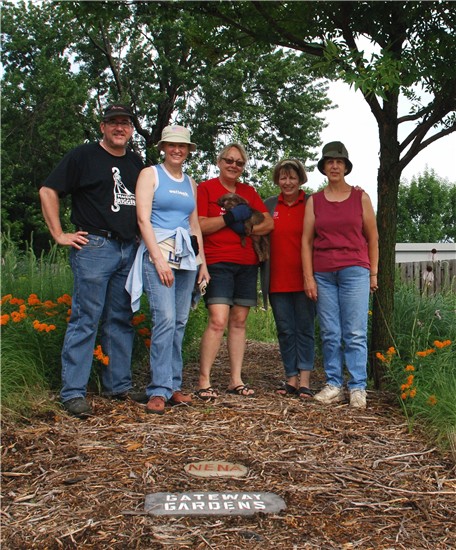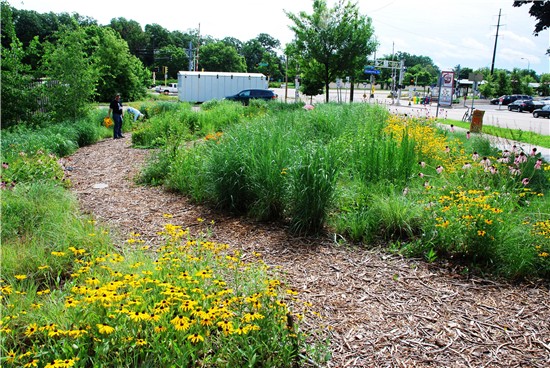
Three years ago, volunteers planted nearly 1,800 flowers, vines and trees on an small corner lot west of the METRO Blue Line’s 50th Street/Minnehaha Park Station. The effort is paying off.
At the peak of its second full growing season, the collection of Giant Hyssops, Wild Geraniums and Purple Prairie flowers that help make up what’s now known as the Nokomis East Gateway Gardens is in full bloom.
For those behind the garden, the space has also become a meeting ground for neighbors and a point of pride that delivers a fitting welcome to the Nokomis East neighborhood.
“I walk by here every day and have a great sense of pride in the neighborhood,” said Sally Einhaus, a 17-year neighborhood resident who has worked on the garden since its inception.
Einhaus was among a group of five volunteers at the garden on a recent Saturday morning pulling weeds and enjoying the company of neighbors.
Less visible than the oranges, yellows and purples that fill the space is the partnership the garden represents.
Metro Transit purchased the small corner property northwest of the Hiawatha Avenue and East 50th Street intersection as part of the METRO Blue Line construction effort. The land was needed to build an electrical substation that provides electricity for trains.
Preparing to demolish a 1920s-era dry cleaning business that sat on the site in 2009, Metro Transit approached the Nokomis East Neighborhood Association to discuss how the land could be reused.
Neighbors viewed the site as important because it serves as an entry to the Nokomis East neighborhood and quickly landed on the idea of a garden because of its proximity to the Nokomis Naturescape Gardens, known nationally for its collection of monarch butterflies.
“Nobody wanted to see a chain link fence with weeds behind it when they turned into the neighborhood,” said Trish Schilling, one of the garden’s most active leaders. “This really is a gateway to our community.”
 Local design firm colberg | tews Landscape Architecture provided complimentary designs for the site. From above, the paths form an outline of a butterfly wing.
Local design firm colberg | tews Landscape Architecture provided complimentary designs for the site. From above, the paths form an outline of a butterfly wing.
Metro Transit agreed to install a fence around the substation, grade the site, install a water line and helped acquire the plants, trees, compost and mulch needed to get the garden off the ground.
Planting occurred over two days in October 2010 and neighborhood volunteers have maintained the site ever since. The garden has attracted several butterflies and been enhanced with the addition of pavers, birdhouses and other decorations.
Schilling said the effort has been sustained “in the spirit of community service” and that the garden has taken on a “look, feel and personality” as it has evolved.
The garden has also helped build connections between the community and Metro Transit.
“Just from a relationship-building standpoint it’s been really valuable,” said Julie Quinn, a planner in Metro Transit’s engineering and facilities department who helped organize the garden project.
> Metro Transit's Adopt-a-Shelter program